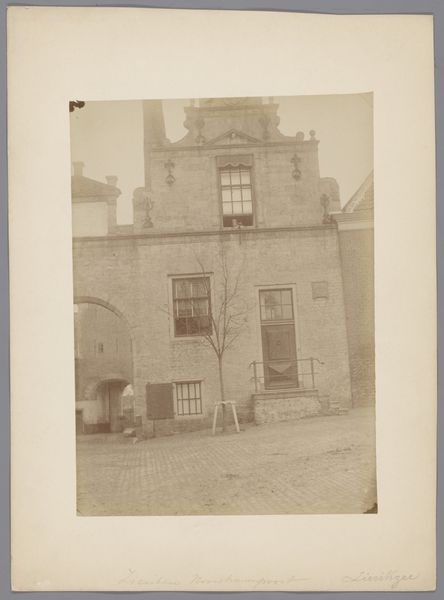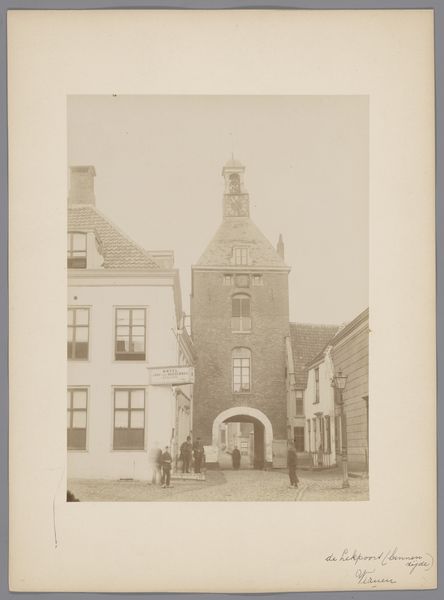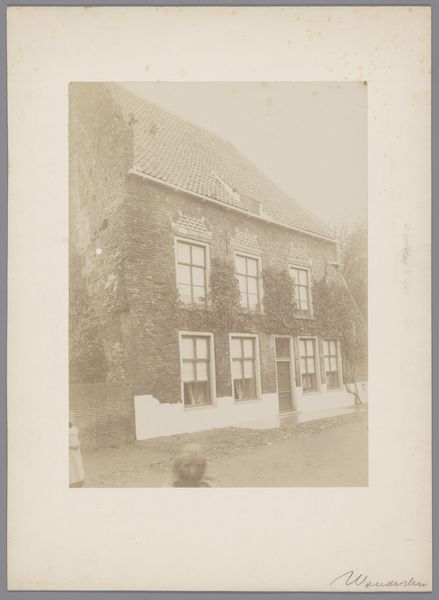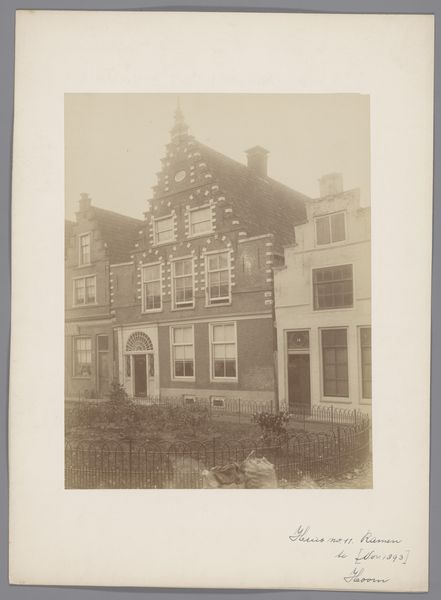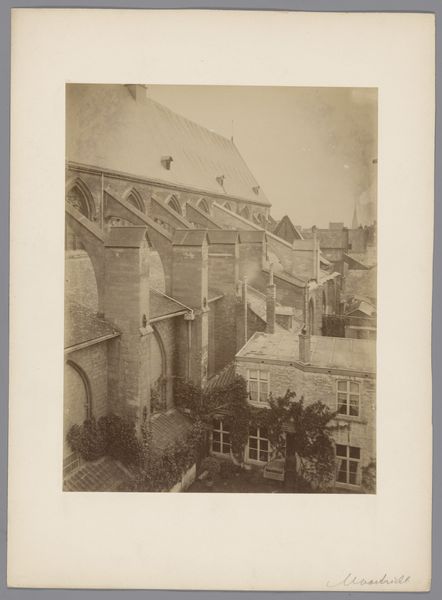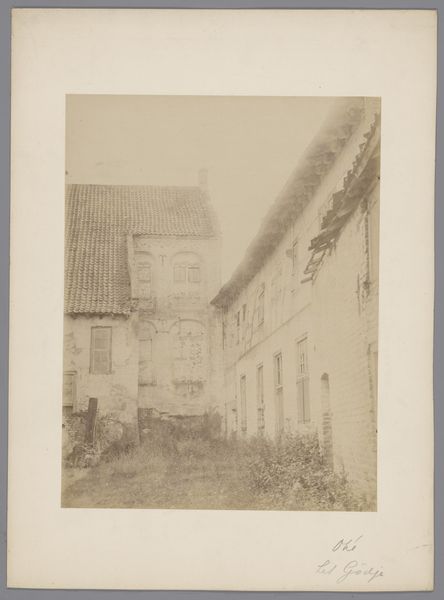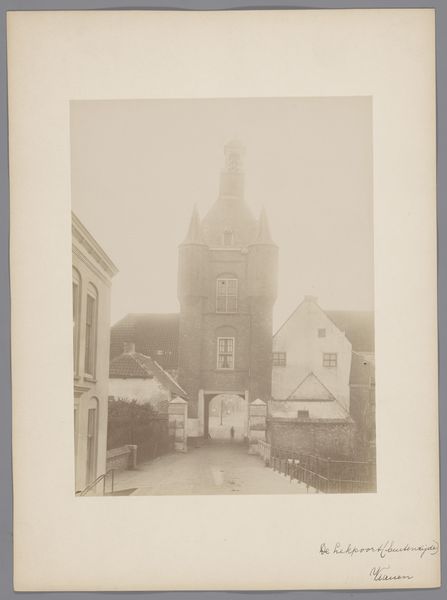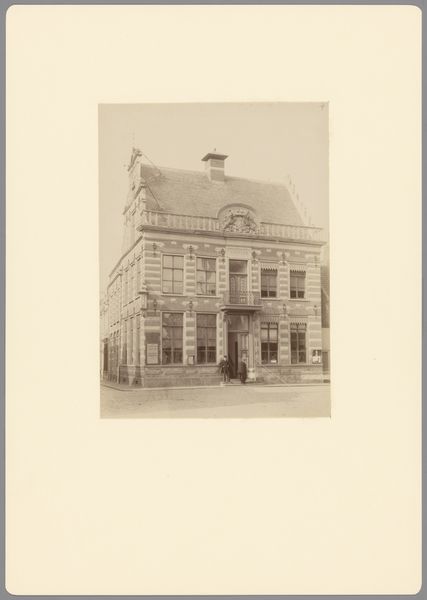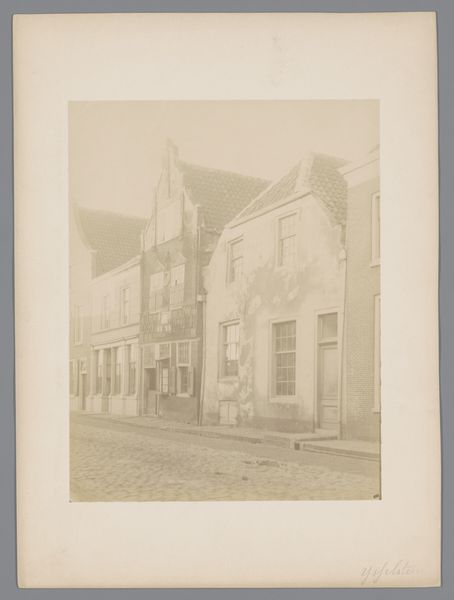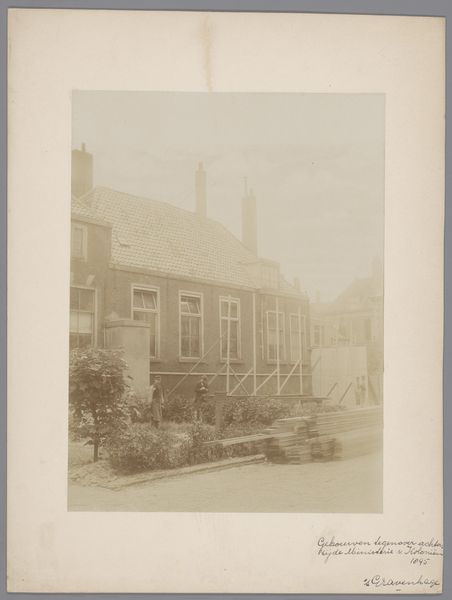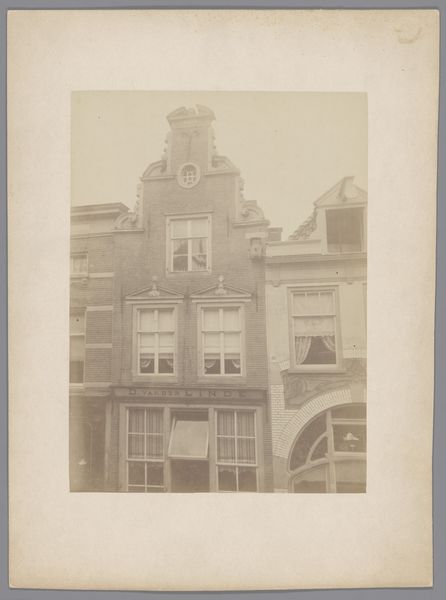
Dimensions: height 231 mm, width 174 mm
Copyright: Rijks Museum: Open Domain
Curator: What we have here is a photograph titled "Stadhuis van Vianen," dating roughly between 1890 and 1920, attributed to an anonymous photographer working with Monumentenzorg, the Dutch heritage agency. Editor: The image has such a hushed and sepia feel. The sunlight is quite soft; it’s casting gentle shadows that seem to accentuate the building’s stillness. You almost want to listen closely, expecting to hear the echo of past civic decisions within its walls. Curator: The façade presents an interesting blend. You've got the ordered Renaissance windows countered with this exuberant baroque entryway, almost bursting with ornamentation. A bit of civic pride trying to signal importance through the visual language available to it, wouldn't you agree? Editor: It makes me think about labor – the carving, the construction itself, the materiality of that entryway as contrasted against the much simpler brickwork of the rest of the building. Was it perhaps a later addition to the structure, or perhaps contracted out to more highly skilled masons than what were available in town? And even the paper – its chemistry and processes for archival documentation as well. What did this paper tell of photographic methods at the turn of the century? Curator: And perhaps Monumentenzorg hoped, through this image, to underscore particular elements as models or memory markers of historical visual worth. The steep roofs and those stepped gables reference earlier Dutch traditions and civic visual symbols that might remind its citizens of cultural value even during industrializing times. A way of constructing the building in their collective conscious by circulating this image. Editor: The image speaks volumes about the values inherent at the moment of its making—this isn't just about celebrating historical worth, as you mentioned, but the work processes to produce photographs was also meant to validate the camera and photographic materials as technologies in modern historical records, while still attempting to create distance and reverence via muted sepia tonalities. Curator: Indeed. Thinking about this image as both a physical object produced using historical technology and as a carrier of encoded architectural symbolism really opens up the possibility of interpretation. Editor: A good reminder that every object contains not only the hands of its maker but speaks volumes to the social relations embedded in it as well.
Comments
No comments
Be the first to comment and join the conversation on the ultimate creative platform.
